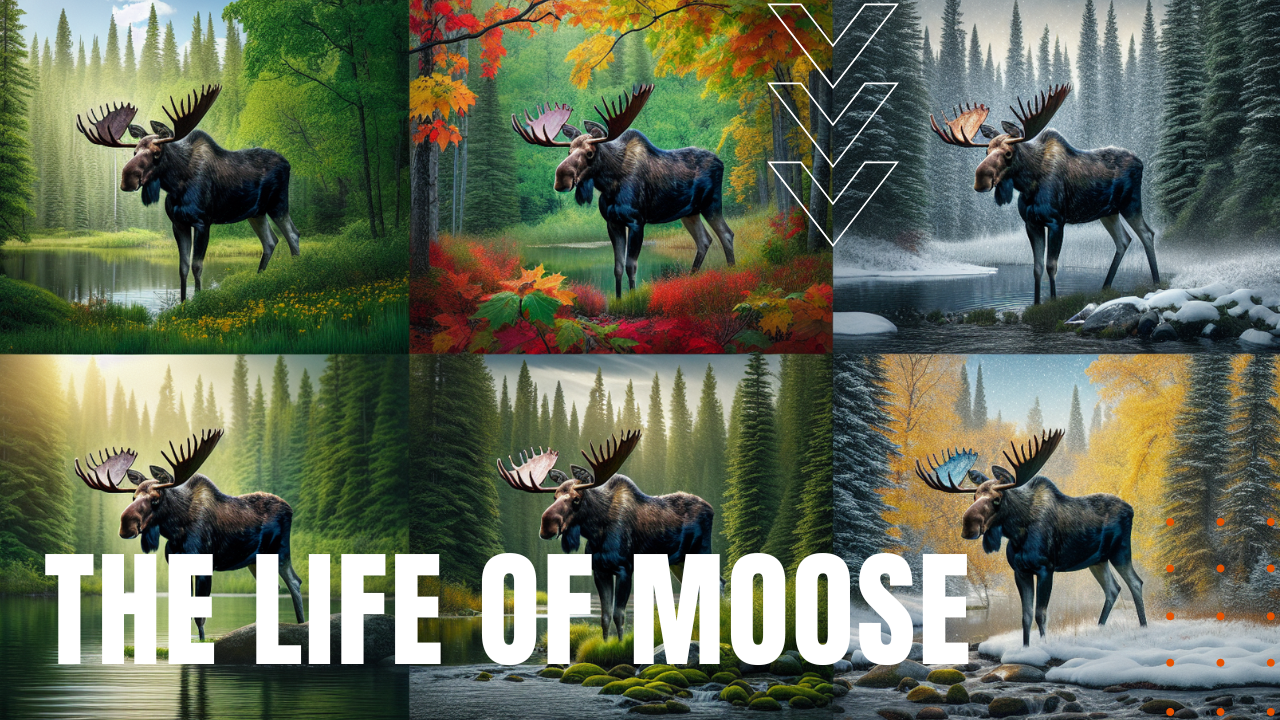The Life of Moose

The largest deer species of the family cervidae, adult moose stand six feet tall from hoof to shoulder, weighing anywhere from 840 to 1800 pounds, while their light to dark brown fur traps air beneath the surface, providing insulation from their harsh winter habitats. Found in the northern regions of the United States, from Washington to Maine, Canada and Alaska, moose generally live in forested areas with an abundance of streams and ponds. Adult moose use their hooves in the case of females and antlers and hooves in the case of males, to fend off predators like bears and wolves, although smaller and more vulnerable calves are frequently lost to predation before they reach their first year of age.
Eater of Twigs
Known as foraging herbivores, they also fall victim to parasitic brain worms, which are carried benignly by white-tailed deer, yet when white-tails defecate, snails eat the brain worms that are then inadvertently consumed by moose while foraging for food. Meaning “eater of twigs” in the Algonquin language, because of their enormous size, moose find it difficult to bend down to eat grasses, preferring instead to feed on the leaves, bark and twigs from trees and shrubs, in particular, native willow, aspen and balsam fir. Comprising nine recognized species, Moose are also adept swimmers who munch on many different kinds of aquatic plants from streams and ponds.
Lengthy Gestation Period
While females known as cows don’t grow antlers, Male moose or bulls grow antlers annually in the springtime in advance of their autumn mating season—sometimes upwards of six feet across—fighting with other bulls for the right to mate with a given cow. Gestating their young for an average 243 days, cows give birth to one calf that stays with their mother for a year, before venturing off into their solitary lives. With an average lifespan of seven years for a bull and eight years for a cow, moose are in jeopardy across the U.S., from New Hampshire, Vermont, and Maine, to Minnesota and Michigan due to rising global temperatures, leading to oftentimes fatal bouts of overheating, susceptibility to disease and tick infestation, making the life of moose, a challenged giant of upper North America.
